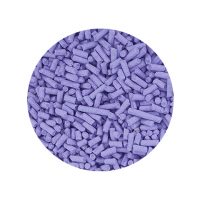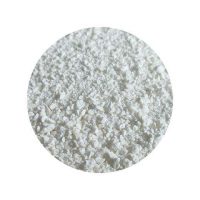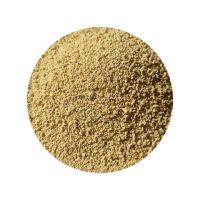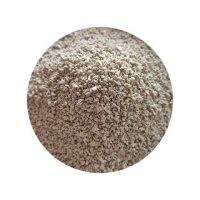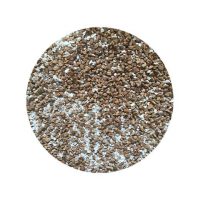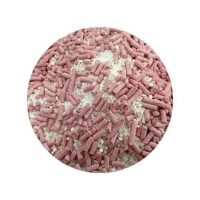Ever wondered what’s in your cat’s litter box? While it might not be the most glamorous topic, understanding the composition of cat litter can help you make informed choices about your pet’s hygiene and well-being.
In this blog post, we’ll explore the different materials used to make cat litter, their pros and cons, and how to choose the best option for your feline friend.
What Is Cat Litter?
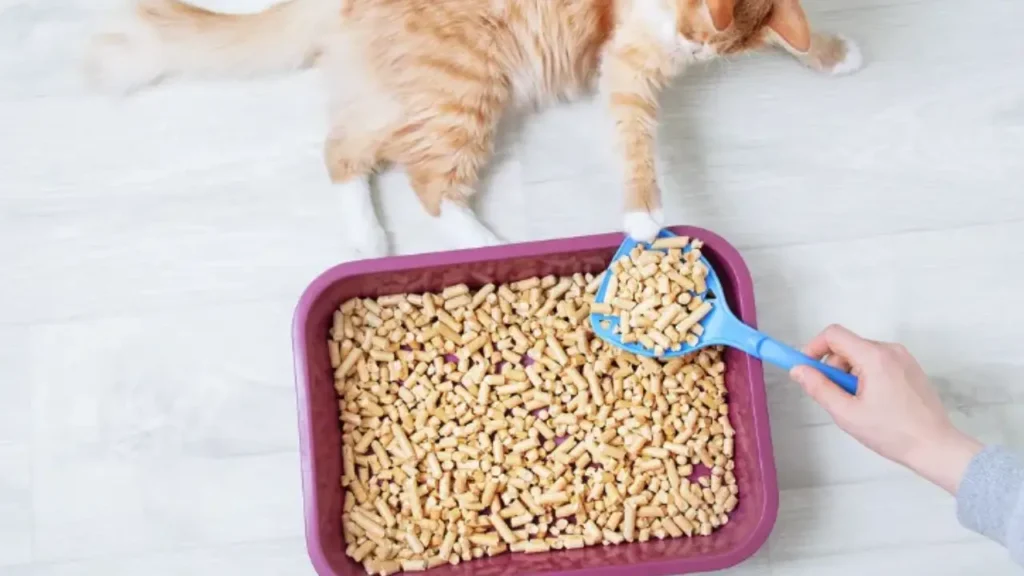
Cat litter is a material used to line the bottom of a cat’s litter box. It serves as a substrate for your cat to eliminate waste and helps to absorb moisture and control odors.
There are several different types of cat litter available, each with its own unique properties and benefits.
What is Cat Litter Made Of?

Here are popular types of cat litter material in the cat litter industry as follows:
Clay-Based Litter
- Bentonite: This is the most common type of clay used in cat litter. It’s known for its strong absorption properties and ability to clump, making it easy to clean.
- Calcium Montmorillonite: This type of clay is often used in premium cat litters. It’s known for its excellent odor control and clumping ability.
Bentonite Clay
Bentonite clay is the most common type of clay used in cat litter. It’s known for its strong absorption properties and ability to clump, making it easy to clean.
Here are some key features and benefits of bentonite clay cat litter:
- Absorbent: Bentonite clay is highly absorbent, effectively soaking up moisture and odors.
- Clumping: It forms clumps when it comes into contact with moisture, making it easy to scoop out waste and leave the rest of the litter clean.
- Odor control: Bentonite clay helps to neutralize unpleasant odors, keeping your home fresh.
- Availability: Widely available and affordable.
Silica Gel Litter / Crystal Cat Litter
- Crystal-based: Silica gel litters are made from tiny crystals that absorb moisture and odors.
- Low dust: These litters are often dust-free, making them a good choice for cats with respiratory sensitivities.
- Tracking: Silica gel litters can be prone to tracking, so it’s important to choose a non-tracking variety if this is a concern.
Natural Cat Litter
- Plant-based: These litters are made from natural materials like pine, wheat, or corn. They’re often considered more environmentally friendly options.
- Absorbency: Natural litters can be highly absorbent, but their odor control capabilities may vary.
- Tracking: Some natural litters can be prone to tracking, so it’s important to choose a low-tracking variety.
When choosing a cat litter, consider factors like your cat’s preferences, your budget, and your environmental concerns. Some cats may be sensitive to certain materials, so it’s important to observe your cat’s behavior and preferences when selecting a litter.
What is Clay Cat Litter Made Of?

Clay cat litter is primarily made from bentonite, a type of clay that is known for its absorbent properties. Bentonite is a naturally occurring mineral that can absorb up to eight times its weight in liquid. This makes it ideal for use in cat litter, as it can effectively absorb moisture and control odors.
Some premium clay litters may also contain calcium montmorillonite, another type of clay that is known for its excellent odor control and clumping ability.
Ingredients in Non-Clay, Natural Cat Litters
Non-clay, natural cat litters are made from various plant-based materials. Here are some common ingredients:
1. Pine
- Pinewood: A popular choice for natural cat litters.
- Absorbent: Highly absorbent for odor and moisture control.
- Flushing: Many pine-based litters are flushable.
2. Wheat
- Wheat germ: A byproduct of the wheat milling process.
- Nutritious: Can provide some nutritional benefits for your cat.
- Absorbent: Absorbs moisture and odors.
3. Corn
- Corn kernels: A natural and absorbent material.
- Odor control: Helps to control odors.
- May be less tracking: Can be less prone to tracking compared to some other litters.
4. Recycled Paper
- Eco-friendly: A sustainable option.
- Absorbent: Highly absorbent for odor and moisture control.
- Flushing: Often flushable for convenient disposal.
When choosing a non-clay, natural cat litter, consider your cat’s preferences and any specific health concerns. Some cats may be sensitive to certain plant-based materials, so it’s important to observe your cat’s behavior and preferences.
Would you like to know more about specific brands or types of non-clay, natural cat litter?
What is Crystal Cat Litter Made Out Of?
Crystal cat litter is primarily made from silica gel.
Silica gel is a synthetic material that is composed of tiny, porous beads. These beads are highly absorbent and can effectively absorb moisture and odors.
The porous structure of silica gel allows it to trap moisture and prevent it from evaporating, which helps to keep the litter box dry and odor-free. Additionally, silica gel is often used in crystal cat litter because it is low-dust, making it a good choice for cats with respiratory sensitivities.
What is Flushable Cat Litter Made Of?
Flushable cat litter is typically made from recycled paper or plant-based materials. These materials are designed to break down more easily in water, making them suitable for flushing down the toilet.
However, it’s important to note that not all sewer systems are designed to handle flushable cat litter. Before flushing it, it’s crucial to check your local sewage regulations to ensure it won’t cause any problems.
Some popular materials used in flushable cat litter include:
- Recycled paper: This is a common material used in flushable cat litter. It breaks down easily in water and is often considered an environmentally friendly option.
- Plant-based materials: Some flushable cat litters are made from plant-based materials, such as wheat or corn. These materials are also designed to be biodegradable.
When choosing a flushable cat litter, it’s essential to look for products that are specifically labeled as “flushable” and that are approved for use in your local area.
What is Non Clumping Cat Litter Made Of?
Non-clumping cat litter is typically made from clay-based materials, such as bentonite. However, unlike clumping cat litter, it doesn’t form clumps when it comes into contact with moisture.
Instead, non-clumping cat litter absorbs moisture and odors throughout the entire litter box. This means that you’ll need to scoop out the entire contents of the litter box on a regular basis, rather than simply scooping out clumps.
While non-clumping cat litter may require more frequent cleaning, it can be a good option for cats who prefer a softer, more natural feel under their paws. It’s also a good choice if you have a cat with sensitive paws or urinary issues, as clumping litter can sometimes irritate their skin or urinary tract.
What is Silica Cat Litter Made Of?
Silica cat litter is primarily made from silica gel. Silica gel is a synthetic material that is composed of tiny, porous beads. These beads are highly absorbent and can effectively absorb moisture and odors.
The porous structure of silica gel allows it to trap moisture and prevent it from evaporating, which helps to keep the litter box dry and odor-free. Additionally, silica gel is often used in crystal cat litter because it is low-dust, making it a good choice for cats with respiratory sensitivities.
Types of Cat Litter
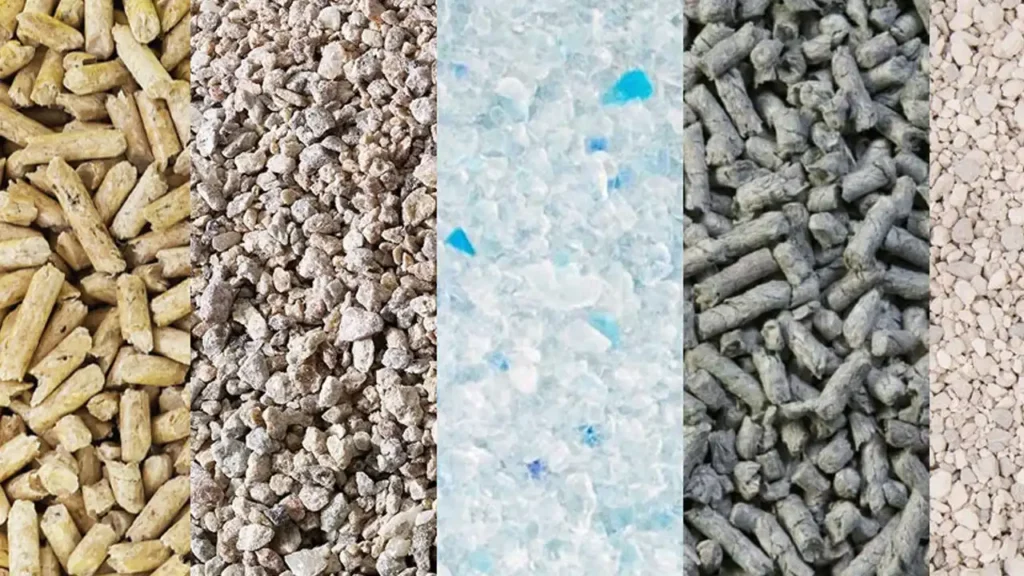
There are several different types of cat litter available, each with its own unique properties and benefits. Here’s a breakdown of the most common types:
1. Clay-Based Litter
- Bentonite: The most common type, known for its clumping ability and odor control.
- Calcium Montmorillonite: A premium type known for its excellent odor control and clumping.
2. Silica Gel Litter
- Crystal-based: Highly absorbent and often dust-free.
- Low tracking: Can be prone to tracking, so choose a non-tracking variety.
3. Natural Litters
- Plant-based: Made from materials like pine, wheat, or corn.
- Eco-friendly: Often considered more environmentally friendly.
- Tracking: Can be prone to tracking.
4. Recycled Paper Litter
- Eco-friendly: Made from recycled paper.
- Absorbent: Highly absorbent for odor and moisture control.
- Flushing: Often flushable for convenient disposal.
5. Wheat Germ Litter
- Natural: Made from wheat germ, a byproduct of the wheat milling process.
- Absorbent: Highly absorbent for odor and moisture control.
- Nutritious: Can provide some nutritional benefits for your cat.
The best type of cat litter for your cat will depend on their preferences, your budget, and your environmental concerns. Some cats may be sensitive to certain materials, so it’s important to observe your cat’s behavior and preferences when selecting a litter.
What is the Best Material for Cat Litter?
Choosing the best material for cat litter depends on several factors, including your cat’s preferences, your budget, and your environmental concerns.
Here’s a breakdown of some of the most popular materials and their pros and cons:
Clay-Based Litter
- Pros: Highly absorbent, excellent odor control, clumping ability.
- Cons: Can be dusty, prone to tracking.
Silica Gel Litter
- Pros: Highly absorbent, low dust, excellent odor control.
- Cons: Can be expensive, may track.
Natural Litters
- Pros: Eco-friendly, often absorbent, can be flushable.
- Cons: May not have the same odor control as clay or silica, can be prone to tracking.
Ultimately, the best material for your cat litter will depend on your individual needs and preferences. If you’re unsure which type to choose, it’s a good idea to try a few different options to see what your cat likes best.
Would you like to know more about specific types of cat litter or get recommendations based on your cat’s needs?
Conclusion
Understanding the composition of cat litter is essential for making informed choices about your feline friend’s hygiene and well-being. From traditional clay-based litters to modern silica gel and natural options, there’s a wide variety of materials to choose from.
Remember to consider factors like:
- Your cat’s preferences
- Your budget
- Your environmental concerns
Are you looking for high-quality cat litter that meets your cat’s needs and your budget? Contact us today for a quote on our selection of premium cat litter products!


